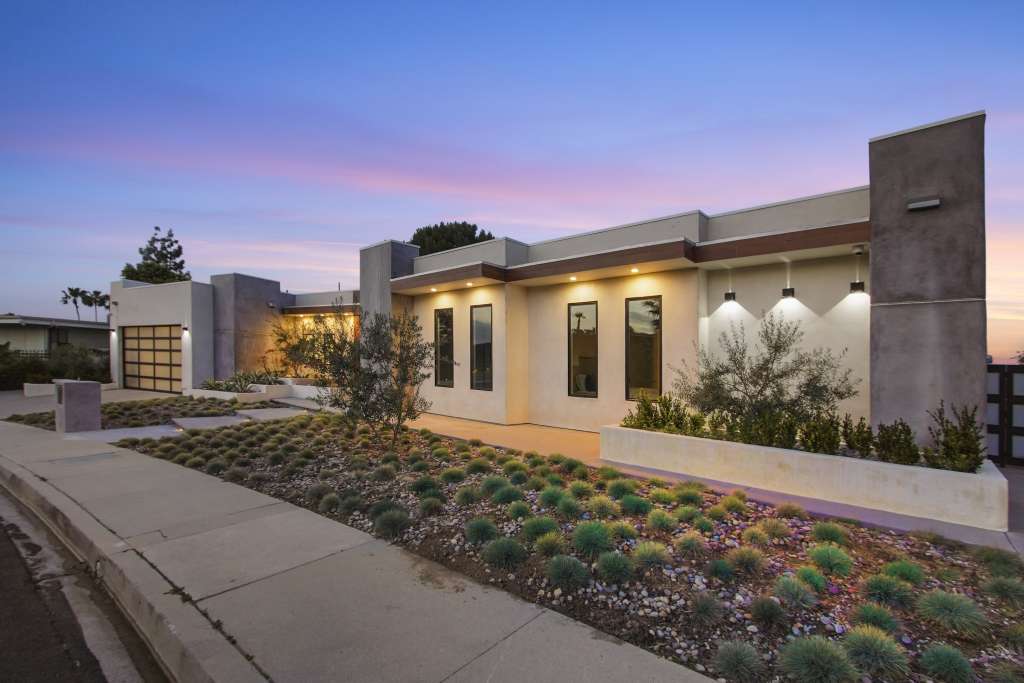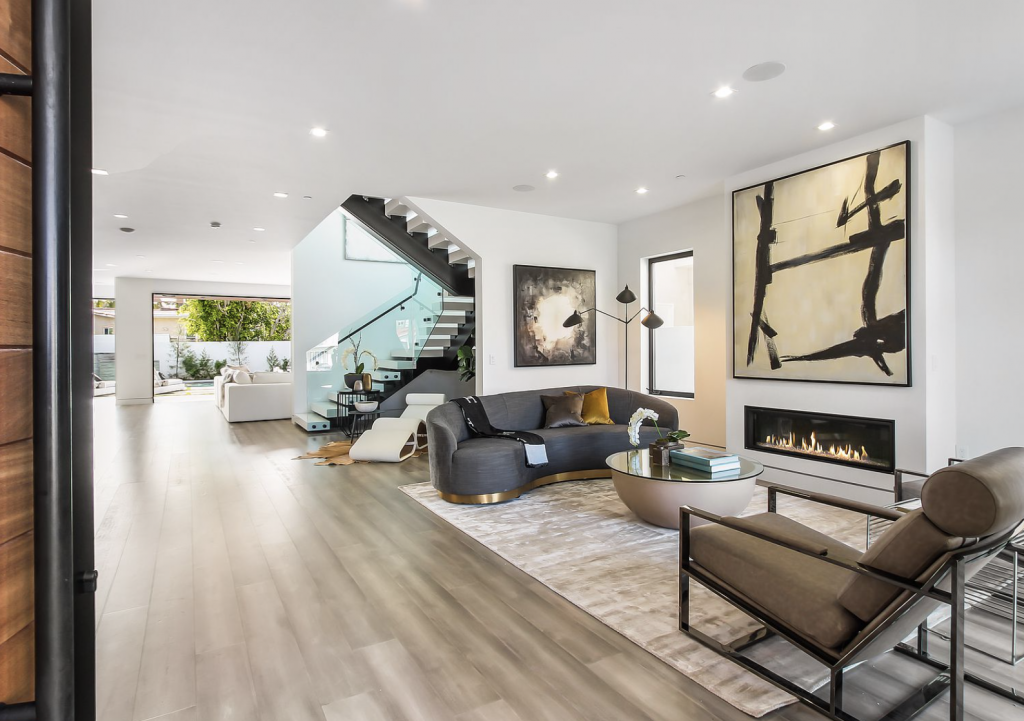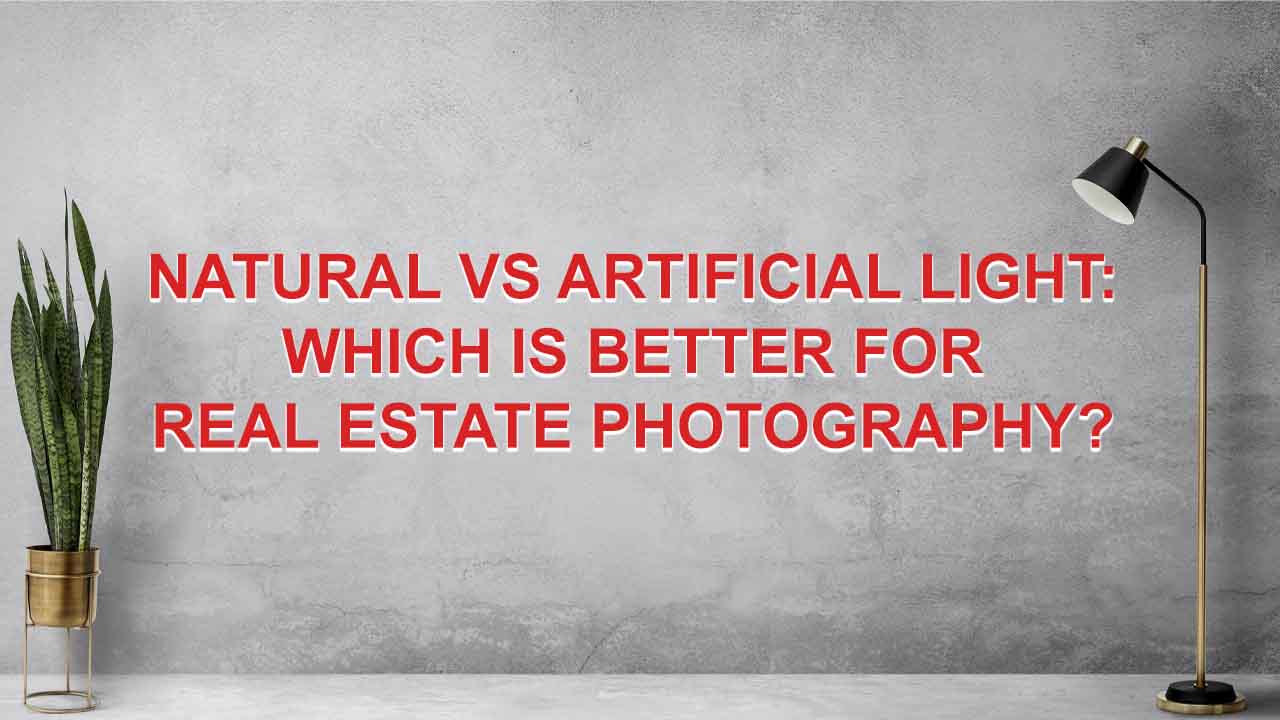The importance of light in photography cannot be understated. But choosing the right type of light for your real estate photography can be tricky.
You want to make sure that your images look their best, but you also need to consider your clients’ needs. So, which type of light should you choose: natural or artificial?
Here’s a breakdown of the pros and cons of each option.
Page Contents
What Is Natural Lighting In Photography?

So what is natural light?
Any light produced from natural sources of light is natural light. The sun is a natural light source, which means that all of its rays qualify as “natural.”
You can take street shots during the midday with this type of illumination, and it will still look good because you’re using the same amount regardless of whether there’s strong sunshine.
Lamplight at sunrise also falls into these categories since they radiate from non-technological sources – meaning no electric lights are needed! Moonlit landscapes are often shot outdoors under cloudy dawn skies for an even more authentic feel, also considered natural light photography.
Pros of Natural Light Photography
First of all, natural light is free! You don’t have to buy and carry any special equipment or software to use it, and you can find it anywhere in the world.
– It’s always available, and you never have to worry about whether there will be enough light to take a good photo.
– You don’t have to worry about running out of batteries or electricity.
– It’s beautiful. Sunlight has a warm and inviting feeling that can make even the simplest scene look stunning.
– It’s versatile. You can use natural light for portrait photography, landscape photography, still life photography, and more!
Cons of Natural Light Photography
There are a few downsides to using natural light in photography. Here are a few of the most common complaints:
– It can be difficult to control. The direction and intensity of natural light can vary greatly, which can make it tricky to get the right exposure.
– It’s not always available. Depending on where you live, there may not be enough daylight hours during the winter months to take good photos.
– It can be challenging to use outdoors. Natural light is often unpredictable, and it can be hard to shoot in harsh sunlight or windy conditions.
But despite these drawbacks, most photographers agree that natural light is still the best option for taking beautiful photos. So give it a try – you might be surprised at how great your photos turn out!
And when you can’t rely on a natural source of light for your photography, then you can always turn to artificial lighting.
What is Artificial Light?

Artificial light is any type of light that is not from the sun.
It can come from lamps, flashlights, or even computer screens. Modifiers such as umbrellas, softboxes, and diffusers allow you to change the quality of artificial lighting in the studio.
Artificial light can be used to create whatever look you want with enough modifiers, making it an extremely versatile alternative.
Even though it’s not as versatile and readily available as sunlight, artificial light can be an excellent option for photography when the sun isn’t available.
Pros of Artificial Light Photography
– It’s easy to control. You can adjust the intensity and direction of artificial light very easily, which makes it a great choice for portrait photography.
– It’s always available. You don’t have to worry about whether there will be enough light to take a good photo – you can just turn on the lights!
– More control over the subject. As you are the one who is deciding how much light and from where to hit your subject, you have a lot more creative control over the look and feel of your photo.
– Easier to manipulate light. With artificial light, you can easily change the light’s color, position, and direction. Anytime you want to create a specific mood in your photo, artificial light can come in handy.
– You don’t have to wait for the sun. If you want to take photos during the day, but the sun is not cooperating, artificial light can be a great solution.
– It creates more consistent results. Artificial lighting is often more predictable than natural light, making you less likely to get blown-out highlights or deep shadows.
Cons of Artificial Light Photography
– More equipment is needed. To use artificial light in photography, you need lighting equipment. This can be as simple as a desk lamp or as complex as a full studio setup.
– Harder to get natural-looking photos unless you are an expert at using artificial light; chances are your photos will look a bit too “studio-like” and not very natural.
– More expensive than natural light. If you want to use artificial light in photography, you need to buy some sort of lighting equipment. Lighting equipment can be pretty pricey, so this may not be the best option for beginner photographers on a budget.
When to use Natural vs Artificial Light for Real Estate Photography?
Let’s talk about when and how to use each type of lighting in photography.
When to use natural light?
– When the property is outdoors
– When there is plenty of windows and good sunlight coming in
– In the morning or evening when the sun is not too harsh
– Sunny days are always great for natural light photography!
When to use artificial light?
– When there is little or no natural light available
– Indoors, in a room without any windows
– To create shadows or highlights that wouldn’t be possible with natural light alone
– Nighttime shots! Artificial lighting can help brighten up a scene that would be too dark otherwise.
How To Use Natural Light In Your Photography?
When taking photos, it’s important to make the most of natural light. Here are a few tips:
– Try to shoot outdoors in the morning or evening when the sun is low in the sky. Natural light is ultimately the best lighting for outdoor photography as it creates a softer feel and better shadows.
– If you are shooting indoors, try to find a room with lots of windows. The more natural light interior design looks better. You can get into your shot better!
– If you are wondering how to get good lighting for indoor photos, you can use reflectors to help bounce light onto your subject. This can be done using white sheets, mirrors, or even aluminum foil.
– If you’re shooting indoors and there’s not enough natural light, try using artificial lights such as flashlights or lamps. Experiment with different angles and distances to find what works best for your shot.
– Don’t forget that you can always take photos outside even when it’s cloudy. The clouds will act as a natural filter. Try different angles and focus points to make the cloudy look of the property beautiful.
How To Use Artificial Light In Your Photography?
When it comes to using artificial light in photography, there are a few things that you need to know to make the most of it. Here are some tips and tricks to help you get started:
– First, decide what type of artificial light you want to use. There are many different types available, from continuous lighting systems to flashes. Choose the one that is best suited for your needs.
– Next, learn how to use it correctly. Practice until you feel comfortable using it.
– Experiment with different techniques and settings to see what works best for you. Try out different combinations until you find something that gives you the results that you want.
Some tools and equipment can help you take the best photos:
- Use a tripod – If you’re taking photos indoors or at night time, then using a tripod will help you keep the camera steady so there aren’t any blurry shots.
- Use a flash – If you’re using a digital SLR camera, then you can use the built-in flash to help create sharp images.
- Shoot in manual mode – When you shoot in manual mode, you are able to control the aperture, shutter speed, and other ISO settings which will help you take better pictures.
- Use a reflector – A reflector is a type of photography equipment that helps to reflect light onto your subject. This can be helpful when taking photos indoors or at night time because it will help to brighten up the scene.
- Use a diffuser – A diffuser is a type of photography equipment that helps to soften the light coming from your artificial light source. This can be helpful when taking photos indoors or at night time because it will help to create a more natural-looking light for your subject.
Natural Vs Artificial Light: What’s The Difference Between Natural And Artificial Light?
Natural light is more pleasing to the eye, but artificial lighting can be used when natural light is unavailable. Natural light gives a photographer more flexibility than artificial lighting for outdoor shootings.
Artificial lights are ideal for shooting indoors or at night; artificial lights give a photographer more flexibility than natural lighting.
On the other hand, natural light creates a very soft effect that provides excellent illumination while maintaining the detail of textures. This means you might need less editing time with your photos if you prefer using artificial lights over natural ones.
However, the difference is in the price, availability, time, and flexibility.
You need to be flexible and learn how to use both natural and artificial lighting in real estate photoshoot.
Bottom Line: Natural Light Vs Artificial Light – Which One Should You Choose?
So, what’s the verdict?
When it comes to real estate photography, should you choose natural light or artificial light when it comes to real estate photography?
The answer is…it depends.
If you have access to a lot of natural light, that’s probably your best bet. But if you don’t have a lot of windows or good lighting in your home, using artificial light can be a great option. Just make sure to take into account the type of artificial light you’re using and how it will affect your photos.
With the right planning and execution, either approach can result in beautiful images that show off your property in its best light.
If you’re finding it trouble performing real estate photography, Revepix provides different real estate photography services in Los Angeles, and nearby areas, including: San Diego, Malibu, Pasadena, Thousand Oaks, Long Beach, Torrance, and Santa Clarita.



